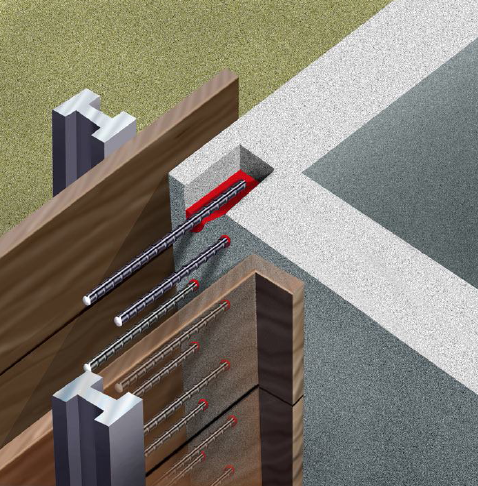Transform Construction with Ultra High Performance Concrete

In the ever-evolving world of construction materials, one innovation stands out for its exceptional strength, durability, and versatility – Ultra High Performance Concrete (UHPC). This revolutionary material has emerged as a game-changer in the industry, pushing the boundaries of what was previously thought possible. In this article, we will explore what UHPC is, its unique properties, and the significant impact it has had on various construction applications.
Understanding UHPC
Ultra High Performance Concrete (UHPC) is an advanced cementitious material that combines cement, fine quartz aggregates, water, and a high dosage of supplementary cementitious materials. The development of UHPC can be traced back to the 1980s, where it was initially known as reactive powder concrete. However, it wasn’t until the early 2000s that UHPC gained widespread recognition and adoption in the construction industry.
Unlike conventional concrete, UHPC has a highly dense microstructure that results from the incorporation of fine particles and advanced mixing techniques. This unique composition grants UHPC an impressive compressive strength of up to 29,000 psi (200 MPa) and an exceptional flexural strength, making it several times stronger than traditional concrete.
Distinctive Properties of UHPC
- Strength and Durability: The exceptional strength of UHPC not only allows for slimmer and more elegant designs but also ensures enhanced durability and resistance to external factors such as harsh weather conditions, chemical exposure, and abrasion. Its low permeability significantly reduces the risk of corrosion in reinforced structures, increasing their lifespan.
- Compactness and Tightness: UHPC’s dense microstructure minimizes the presence of voids and pores, enhancing its mechanical performance. This unique compactness also contributes to its resistance against water ingress, which is especially crucial in marine infrastructure and bridges.
- Enhanced Ductility: Despite its impressive strength, UHPC exhibits enhanced ductility compared to traditional concrete. This means it can withstand deformation without sudden failure, providing an added safety factor in critical structures subjected to dynamic loads or seismic events.
- Thin Elements and Precast Applications: UHPC’s high strength and self-consolidating properties make it suitable for producing thin and complex precast elements. These elements can be fabricated with intricate shapes, contributing to innovative architectural designs and efficient construction processes.
Applications of UHPC
- Bridges and Infrastructure: UHPC is widely used in the construction of bridges, especially in critical components like bridge decks, girders, and connections. Its ability to withstand heavy loads, resist corrosion, and reduce maintenance costs has made it a preferred choice for modern infrastructure projects.
- Facade Cladding and Architectural Elements: UHPC’s high compressive strength and versatility have opened up new possibilities in architectural design. It is used in facade cladding panels, lightweight architectural elements, and aesthetically appealing structural components.
- Industrial and Offshore Structures: In industries where structures are subject to extreme conditions, such as petrochemical facilities and offshore platforms, UHPC provides a reliable solution due to its durability and resistance to chemical exposure.
- Repair and Retrofitting: UHPC is utilized for repairing and strengthening existing structures, extending their service life and improving their performance. Its ability to bond well with existing concrete and its resistance to environmental factors make it a preferred material for retrofitting applications.
Challenges and Future Prospects
While UHPC has revolutionized construction in many ways, there are still challenges to overcome, such as its relatively high cost compared to traditional concrete. However, ongoing research and increased adoption are expected to drive down costs over time, making it more economically viable for broader applications.
In conclusion, Ultra High Performance Concrete (UHPC) has emerged as a transformative material in the construction industry, offering unmatched strength, durability, and versatility. Its unique properties have led to innovative designs, longer-lasting infrastructure, and a more sustainable approach to construction. As technology advances and UHPC becomes more accessible, we can expect it to shape the future of construction, pushing boundaries even further.


